7.6 Logistics: Coordinating the Movement of Resources
Logistics refers to the coordination and movement of resources, particularly inputs into the transformation process and finished goods out to customers. Originally derived from military operations, logistics involves managing the flow of troops, equipment, and supplies. In a business context, logistics management encompasses the following decisions:
- Determining whether to operate and manage the firm’s transportation activities in-house or outsource them.
- Selecting suppliers with the capability to ship goods safely and securely within the required time frame.
- Choosing the appropriate mode of transportation and the most effective route.
- Negotiating shipping rates.
Modes of Transportation
There are several modes of transportation available to companies. We discuss them in the following:
Trucking: The Backbone of Freight Transportation
Trucking plays a pivotal role in the movement of goods, with the majority of shipments relying on trucks either entirely or at some point during the transportation process. Trucking stands out as the most flexible mode of transportation, offering two primary categories:
- Truck-Load (TL): In this category, an entire truck is hired and dedicated to a single shipment, ensuring direct delivery from origin to destination.
- Less-than-Truckload (LTL): This approach involves consolidating multiple orders onto a single truck, thereby increasing the utilization of the vehicle and optimizing transportation costs.
Overcoming the driver shortage is crucial for maintaining the efficiency and reliability of the trucking sector, which serves as the backbone of freight transportation. By addressing this challenge proactively, the industry can ensure its continued ability to meet the ever-growing demand for timely and flexible goods movement, supporting the overall supply chain and economic growth.
Rail Transportation: Efficient Long-Haul Logistics
Rail offers a cost-effective solution for transporting containerized, bulky, and heavy goods over long distances. In Canada, rail plays a vital role in shipping diverse commodities like automobiles, fertilizers, food, forest products, grains, metals, minerals, and petroleum products.
Key advantages of rail include:
- Suitability for large-scale shipments, prompting manufacturers to locate near rail lines for efficient logistics.
- High energy efficiency compared to trucking, reducing environmental impact and highway congestion.
- Canada’s well-established, extensive rail infrastructure supports nationwide cargo movement.
By leveraging rail’s ability to move large volumes cost-effectively over long hauls, businesses can optimize supply chains, reduce transportation costs, and enhance sustainability. Rail’s integration with other modes enables multimodal logistics solutions, boosting efficiency and flexibility in goods movement.
Airfreight: Rapid Transit for High-Value Cargo
Airfreight is the preferred mode for expensive, small, and lightweight goods where speed takes precedence over cost. Air carriers charge based on weight and dimensions, suiting high-value, time-sensitive shipments.
Key advantages:
- Unparalleled speed and reliability for rapid long-distance transport
- Beneficial for industries prioritizing timely delivery, like electronics and pharmaceuticals
Considerations:
- Higher environmental impact due to greenhouse gas emissions
- Firms should explore strategies like shipment consolidation, carbon offsetting, or alternative modes for non-urgent shipments
By balancing speed requirements with environmental concerns, businesses can leverage airfreight judiciously for high-value, time-critical cargo while promoting sustainable logistics practices.
Waterway Transportation: Cost-Effective for Bulk Shipments
Waterways are a common mode for shipping heavy commodities like chemicals, stone, cement, sugar, coal, and other bulk materials. Millions of containers travel by ship annually.
Key advantages:
- Cost-effectiveness, especially for low-cost, bulk products.
- Major systems like the Great Lakes St. Lawrence Seaway, a 3,700-kilometer marine highway opened in 1959, facilitate trade between Canada and the U.S., serving many industries to ship iron ore, coal, limestone, steel, grain and cement (The St. Lawrence Seaway Management Corporation, n.d.).
- Reduces road congestion and environmental impact by diverting freight from highways.
Waterway transportation offers an efficient and economical logistics solution for industries relying on bulk commodity movement or low-cost product shipments.
As global trade grows, the importance of waterways in optimizing supply chain costs and reducing environmental footprint remains significant.
Pipeline Transportation
Pipelines are the primary mode of transportation for crude oil, natural gas, and other petroleum products. Once the pipeline infrastructure is established, the cost per kilometre for shipping these commodities is relatively inexpensive.
However, the construction of new pipelines often faces significant opposition and concerns due to the potential risks of spills and leaks, which can lead to land and water contamination, posing environmental threats.
Multimodal/Intermodal Shipping: Integrated Logistics Efficiency
Multimodal and intermodal shipping leverage multiple transportation modes (e.g., truck/ship/rail) to move goods efficiently from origin to destination under a single contract. Intermodal shipping utilizes containers, minimizing handling during mode transfers.
Key benefits:
- Increased security and reduced loss/damage
- Enhanced speed through streamlined mode transfers
- Optimized efficiency by utilizing the strengths of each mode
With designated carriers responsible for each leg, these integrated solutions enable coordinated, accountable, and seamless logistics operations.
Multimodal/intermodal shipping combines various modes and provides businesses with flexible and efficient supply chain solutions for optimizing goods movement across diverse regions.
TRUCKING
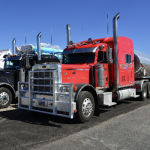
- Flexible (truck load vs. less-than-truckload)
- Drivers in demand
- Creates highway congestion
RAILROADS
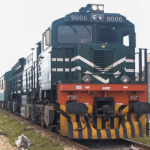
- Ideal for bulkier products or containers
- Cost effective over distances
- Energy efficient
AIRFREIGHT

- Ideal for small & light products
- Prioritizes speed over cost
- Reliable
- Air pollutant
WATERWAY
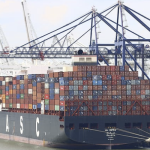
- Ideal for low cost, heavy products
- Very common
- Inexpensive
PIPELINE
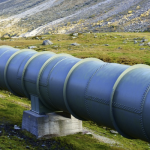
- Used for crude oil, gas, petroleum
- Once built, very cost effective
- Land and water pollutant
MULTIMODAL
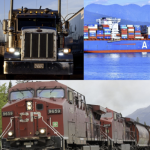
- Uses a combination of modes through a carrier
- Products secured in containers
- Contractual with a single carrier
Distribution Management: Orchestrating Efficient Product Flow
Distribution management refers to the process of overseeing the movement of goods from suppliers or manufacturers to the point of sale. It is a critical component of the business cycle for distributors and wholesalers, as their profitability hinges on the ability to rapidly turn over their inventory. The faster goods are sold, the higher the earnings, ensuring the business’s future growth and success. Effective distribution management is essential for businesses to remain competitive and maintain customer satisfaction.
Distribution encompasses a diverse range of functions, including customer service, shipping, warehousing, inventory control, private trucking fleet operations, packaging, receiving, and materials handling, as well as strategic planning for plant, warehouse, and store locations. Additionally, the integration of information systems plays a crucial role in streamlining distribution processes.
The overarching goal of distribution management is to achieve ultimate efficiency in delivering raw materials, parts, and both partially and completely finished products to the right place, at the right time, and in the proper condition (Kenton, 2019).
The combination of distribution and transportation forms the backbone of logistics operations. In any logistics system, the most critical factor is the ability to deliver products quickly while maintaining their perfect condition. Companies like Amazon have leveraged their supply chain management expertise to fuel their rise to the top, demonstrating the importance of efficient distribution in achieving business success.
By effectively managing distribution processes, businesses can optimize inventory levels, reduce costs, and enhance customer satisfaction, ultimately driving profitability and competitiveness in their respective markets.
The combination of distribution and transportation is logistics. The most important factor in any logistics is quickly delivering the product in perfect condition.
Cross-docking: Streamlining Product Flow
Cross-docking involves transferring goods directly from inbound to outbound carriers, bypassing warehousing and storage. Products “cross the docks” from receiving to shipping areas.
Key benefits:
- Inventory savings by eliminating storage costs
- Accelerated delivery for improved customer service
- Reduced handling and risk of damage
- Optimized space utilization
Cross-docking streamlines supply chains by minimizing product movement time and resources is ideal for time-sensitive, perishable, or high-turnover goods.
Effective implementation requires synchronizing inbound/outbound shipments, collaborating with partners, and leveraging technologies like real-time tracking.
Through cross-docking, businesses can optimize operations, reduce inventory costs, and enhance timely, cost-effective product delivery for competitive advantage.
“Supply Chain” from Introduction to Operations Management Copyright © by Hamid Faramarzi and Mary Drane is licensed under a Creative Commons Attribution-NonCommercial-ShareAlike 4.0 International License, except where otherwise noted.—Modifications: used section Logistics, some paragraphs rewritten; added additional explanations.

